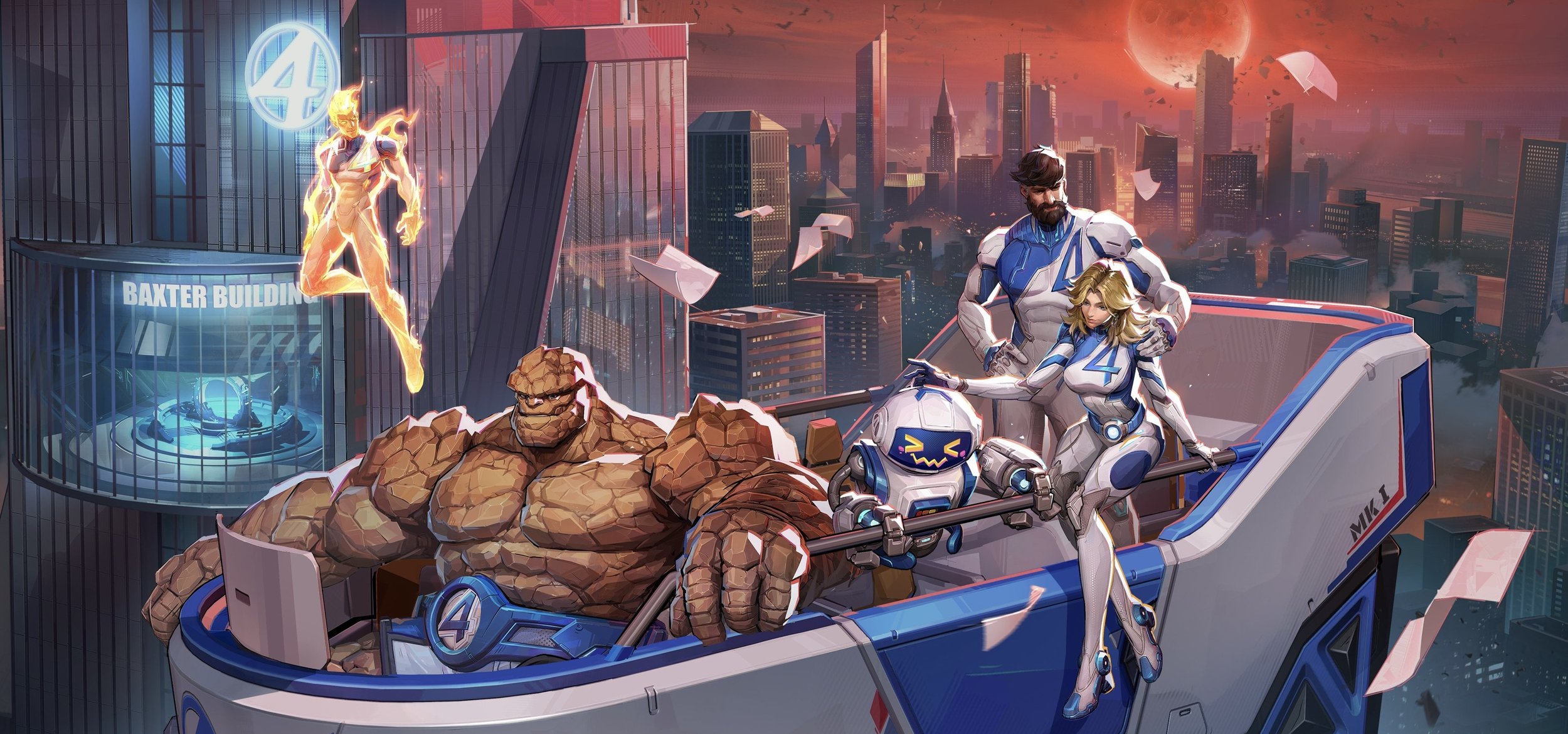
The Fantastic Four VR Experience
The Concept:
The Fantastic Four VR experience is an MVP prototype that embodies Marvel fans in the shoes of their favourite heroes for an immersive adventure on the Meta Quest 3 HMD. Created for the Narrative and Storytelling brief, the project explores an emotional scene between two iconic characters — The Thing and the Incredible Hulk.
The Brief:
Our brief for this project focused on narrative and storytelling. With a shared passion for the Fantastic Four universe, we decided to base our narrative around this franchise. It was crucial for us to plan a clear user journey map to effectively stimulate the sense of a linear storyline.
Overall, we feel we have successfully responded to the brief. Through a combination of cinematic scenes, immersive sound design, and detailed environment design, we have curated a meaningful and empathetic storyline that truly puts viewers in the shoes of the Hulk.
The Fantastic Four
-

Damian
LEAD DEVELOPER
-

Maddi
ANIMATION & SOUND DESIGN
-

Bertie
ENVIRONMENT DESIGN & MO-CAP
-

Mike
ANIMATION
The Team & My Role:
I really enjoyed being a part of this team; we each brought a diverse range of technical skills to the production pipeline. As it was a narrative storytelling brief, the project was primarily art and design-focused.I specialised in environment and asset design, as well as the motion capture process, including opti-track data capture and (Motive cleaning for character animation).
TECHNICAL PIPELINE
TECHNICAL PIPELINE
Our technical pipeline followed a six-stage structure: starting with storyboarding and character selection, we moved into asset modelling and animation setup using IK and motion capture. From there, we implemented VR embodiment and combat mechanics in Unity, followed by scene assembly with lighting and audio integration, and wrapped up with one round of play-testing before the demo.
Environment Design
My primary role on the project was to design, model, and assemble the entire environment, including creating the ruins assets, setting up a dynamic HDRI lighting system, and implementing real-time dust particle effects. We aimed for an abandoned, post-apocalyptic wasteland aesthetic to align with the original comic book scene, which was set on a similarly desolate planet. Throughout the process, I focused on optimising asset topology for real-time rendering, carefully balancing visual detail with performance requirements to create an immersive and believable atmosphere.Below is some of the initial concept art for the environment.
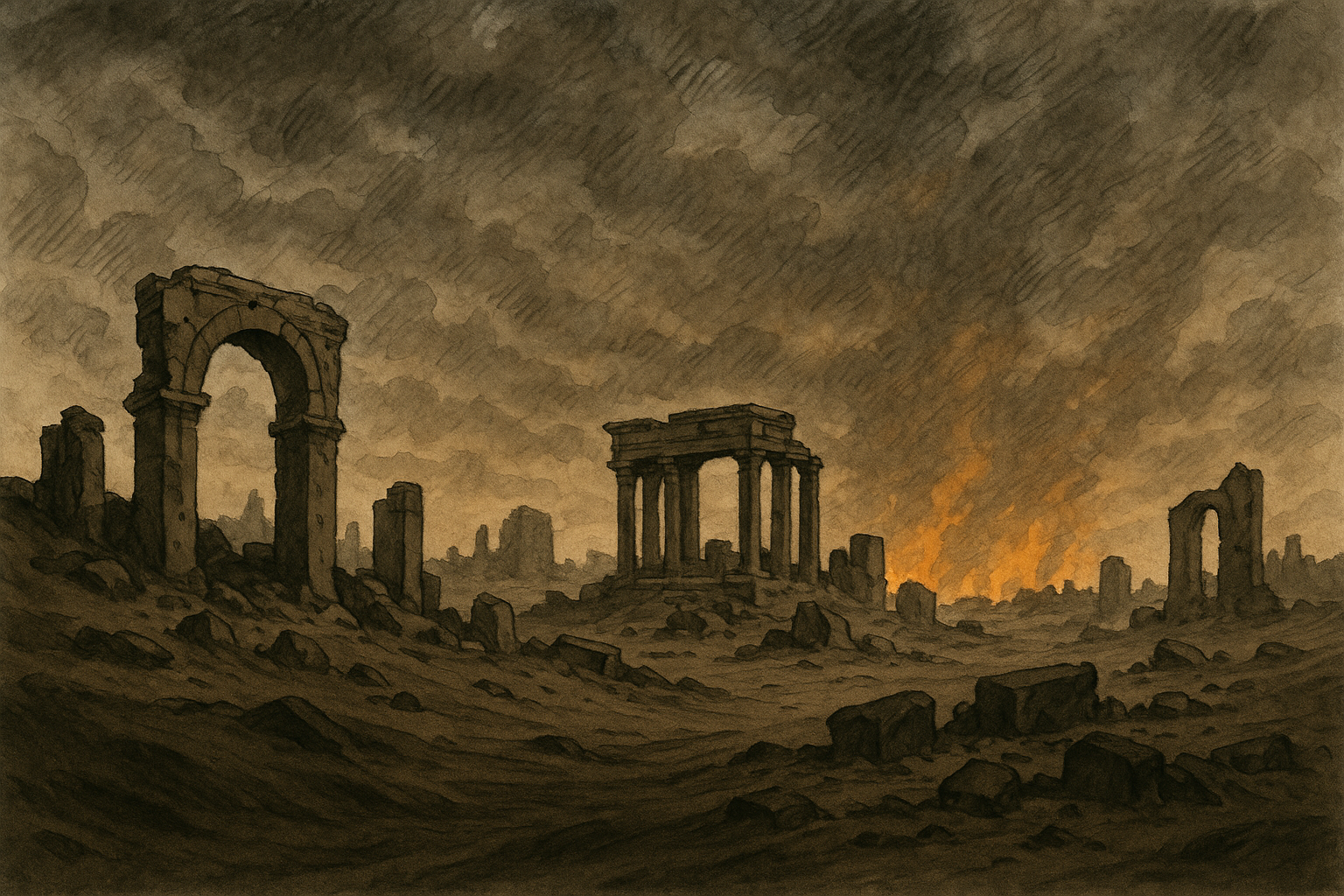

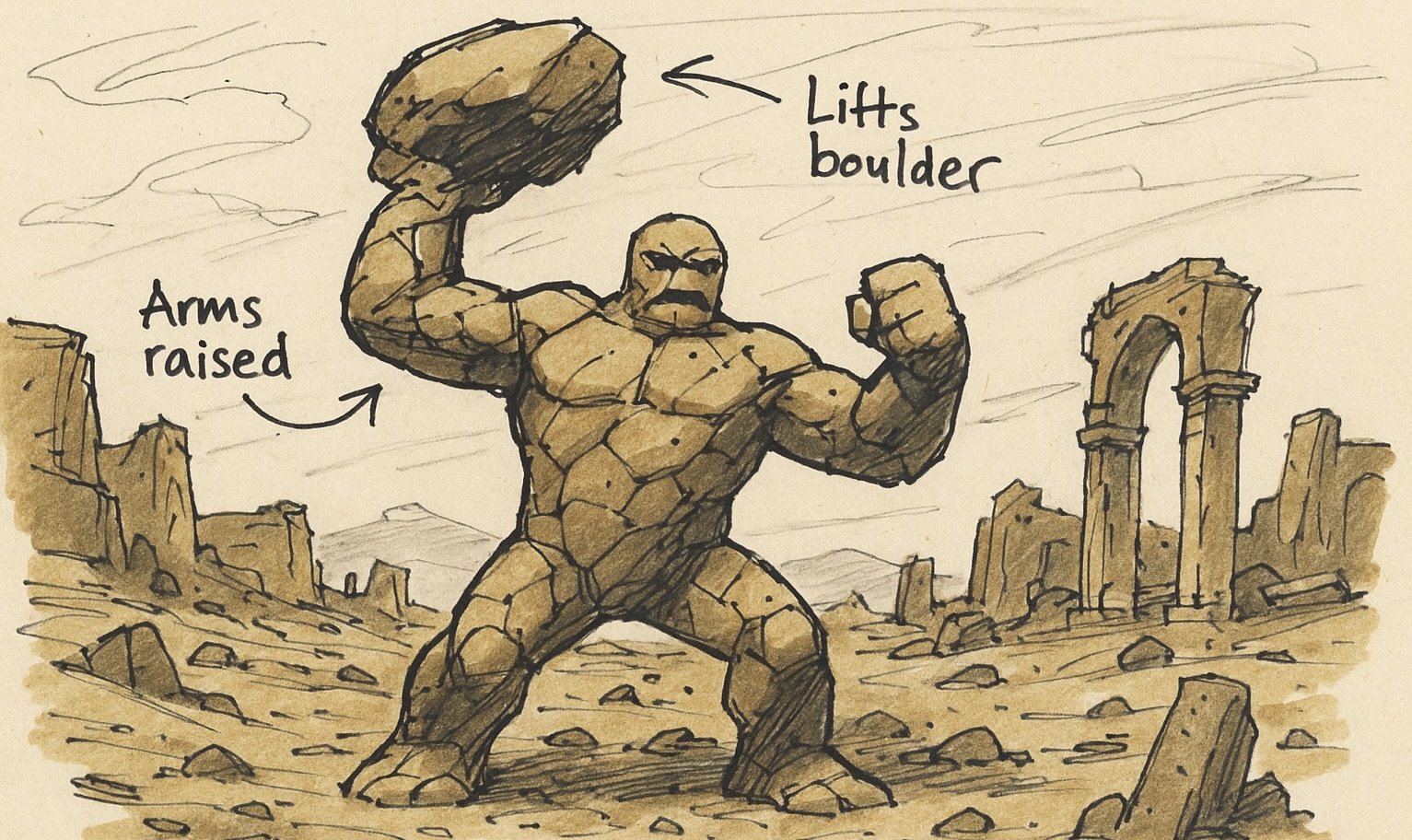

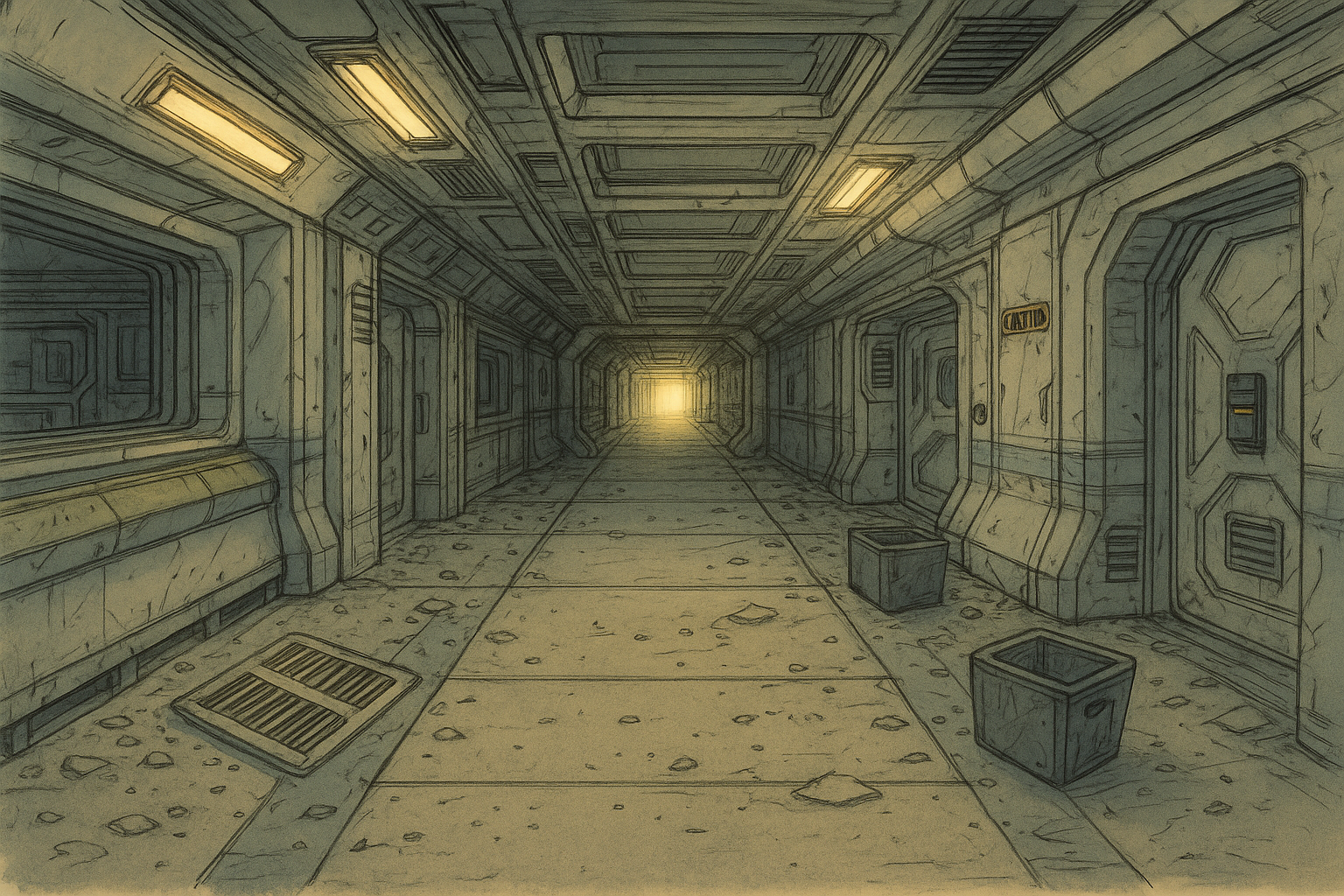
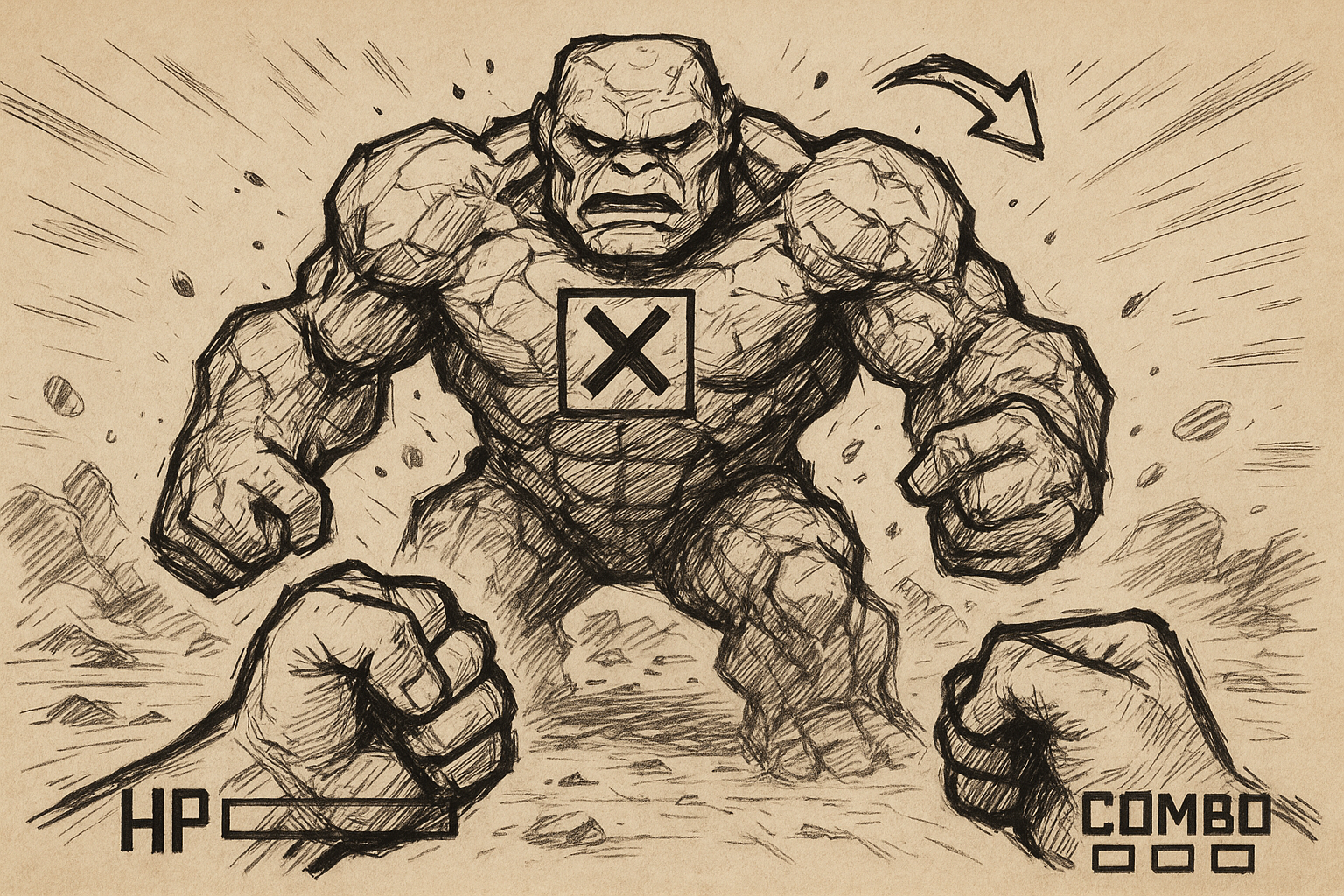
UNITY DESIGN
Designing the VR world in Unity started with sculpting the desert environment using the built in terrain and Landscaping tools. This allowed me to create sweeping sand dunes and naturally layered elevations. I then added to the scene with the ruin assets, creating a crumbled, ancient aesthetic that enhances the drama of the narrative experience. A key technical challenge was optimising the environment for VR—high polygon ruins and the terrain details had to be balanced with performance to maintain a stable frame rate. Building for VR also meant being mindful of player scale, collider placement, and sight-lines to maintain immersion from a first-person perspective.
Motion Capture
-

Optitrack
We used the OptiTrack motion capture system to record a custom sequence of movement data that was not available on Mixamo. By creating our own motion capture data, we were able to enhance the narrative and deliver the story in a more personal and authentic way.
-

Data Cleaning
After the capture, I used Motive Studio to clean and refine parts of the sequence, as some of our more complex combat movements caused occlusions. Although this is a relatively time-consuming process, it is essential for achieving a clean and seamless fight scene.
-

Retargeting
I then mapped the cleaned motion capture data onto our character model in Unity and Blender. As we did not start the first OptiTrack session with a T-pose, some retargeting issues occurred. The oversized proportions of the Hulk and Thing models also caused slight distortions in the final animations.
UI CODE
This was my first time working with C#, and with only one developer and three designers on the team, I had to step into a more technical role to help move the project forward. I focused on building parts of the UI, learning from Damian as I went. The learning curve was steep, but getting hands-on with the code gave me a much clearer understanding of the technical pipeline. I quickly picked up core Unity scripting concepts like coroutines, event-driven callbacks, and UI component control—skills that became essential in bringing interactive elements to life in our VR project. It’s made me more confident working across both design and development, and helped me better grasp what’s feasible from a developer’s perspective. While the code wasn’t complex, I’m proud of what I achieved and how it contributed to the project.
INVERSE KINEMATICS
I really enjoyed working on the inverse kinematics (IK) for this project. It was my first time using IK, and I quickly realised how tricky it can be, especially when trying to apply it to a large-scale rig like our Hulk model. To avoid bugs during the demo, we decided not to include it in the final build and instead used simple model hands. Still, getting the IK setup working, even just for testing, was a great learning experience and something I’d love to improve on in future versions.
FUTURE DEVELOPMENT.
IK INTEGRATION:
One limitation we encountered was setting up the IK system, which impacted the overall immersion of the experience—during the combat scene, the hands remained static instead of clenching. While we managed to set up the IK, the Hulk model’s unique shape and proportions interfered with its effectiveness. To fully integrate IK, we’ll need to reshape and adjust the Hulk model, specifically by shortening the neck and arms.
enhanced animations:
As a team, we discussed ways to improve the combat sequence and agreed we could enhance both the immersion and interactivity. For example, when you're prompted to block a punch, a timer appears—fail to block in time, and you stumble backwards and lose a “life.” Likewise, landing a punch on The Thing triggers more satisfying haptic feedback, paired with a visible stumble from him.
Reflection
Overall, I really enjoyed this project and feel that we successfully answered the initial narrative and storytelling brief. As a team, we grew, adapted, and learned a lot from each other. There were a few moments throughout the project timeline where things didn’t go exactly to plan, but we pulled together and ultimately achieved a final outcome we were proud of.
Reflection is about being honest and critical, so I want to highlight the areas I personally learned from. After completing the project, I identified Two core areas I believe I need to improve on for future projects in industry.
One key area is feasibility and scale. At the beginning, I think we were all slightly overambitious. We set out to create four in-depth scenes for each F4 character and incorporate multiple complex gesture interactions. However, after our first product pitch, it became clear that this approach wasn’t realistic within the timeframe and resources we had. We learned that it was better to focus on creating one strong MVP scene and refine it as much as possible. This experience taught me the importance of balancing ambition with feasibility to deliver the best possible outcome.
The second area I identified was project and workflow management.At the start of the project, some team members were unable to attend university in person, so much of the work became remote.
We didn’t have a clear timeline or structured workflow in place, which meant we often worked quite independently rather than collaborating as a team. As a result, some of us ended up working on the same tasks without realising, and we were not meeting the initial timeline goals.Recognising this, we sat down as a team to discuss how we could improve our workflow. We agreed to delegate clearer roles and tasks, and we introduced Notion and FigJam to better organise and communicate our progress. Implementing these tools really helped streamline our collaboration and allowed us to start hitting our targets more effectively. This experience showed me how essential good project management is for the success of any team project.
Through facing these hurdles, I have grown as a designer and learned how to better anticipate and mitigate similar risks in future group projects.
Final words
I really enjoyed this project—not only did it challenge me, but it also pushed me to step outside my comfort zone and pick up new skills, like C#. While there were clear areas for improvement, each one became a valuable learning opportunity that helped me grow both technically and creatively.











